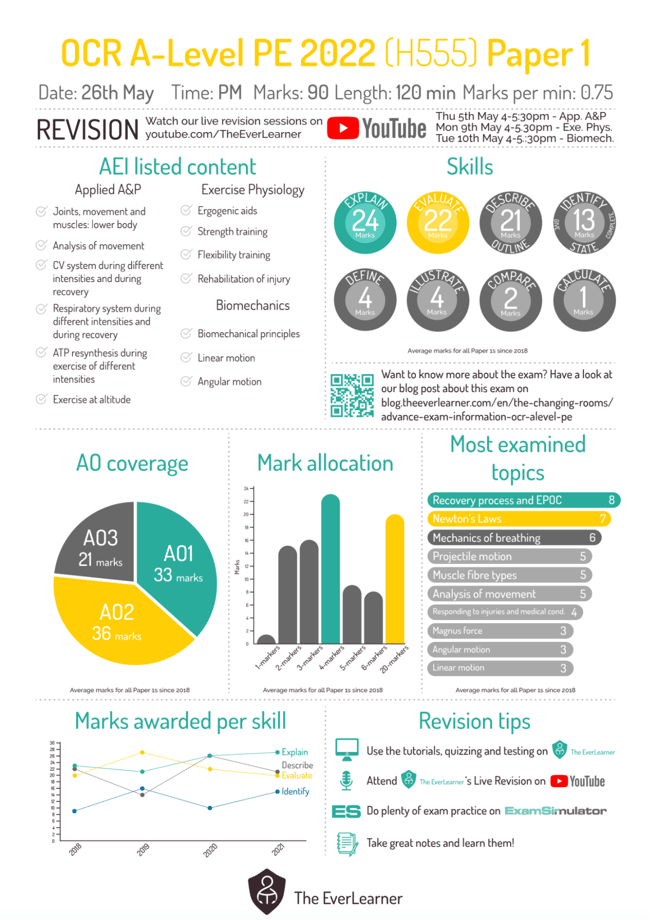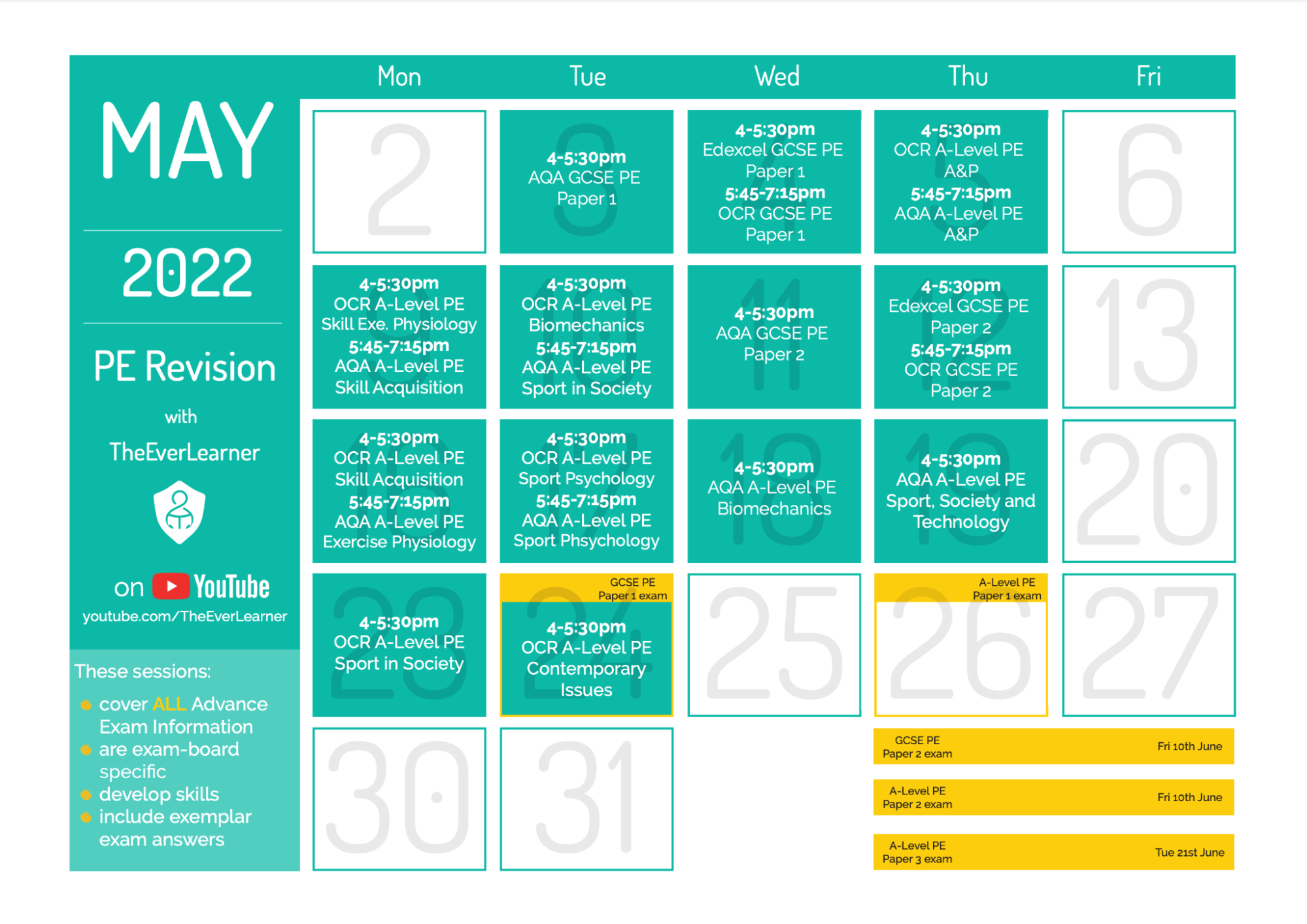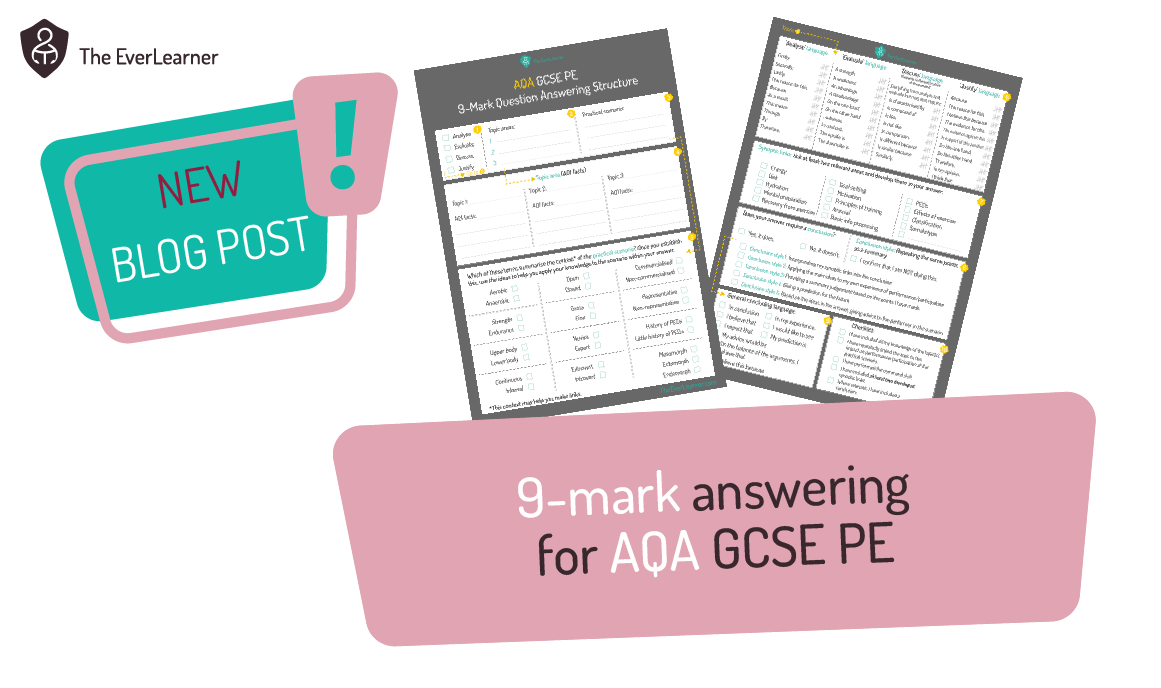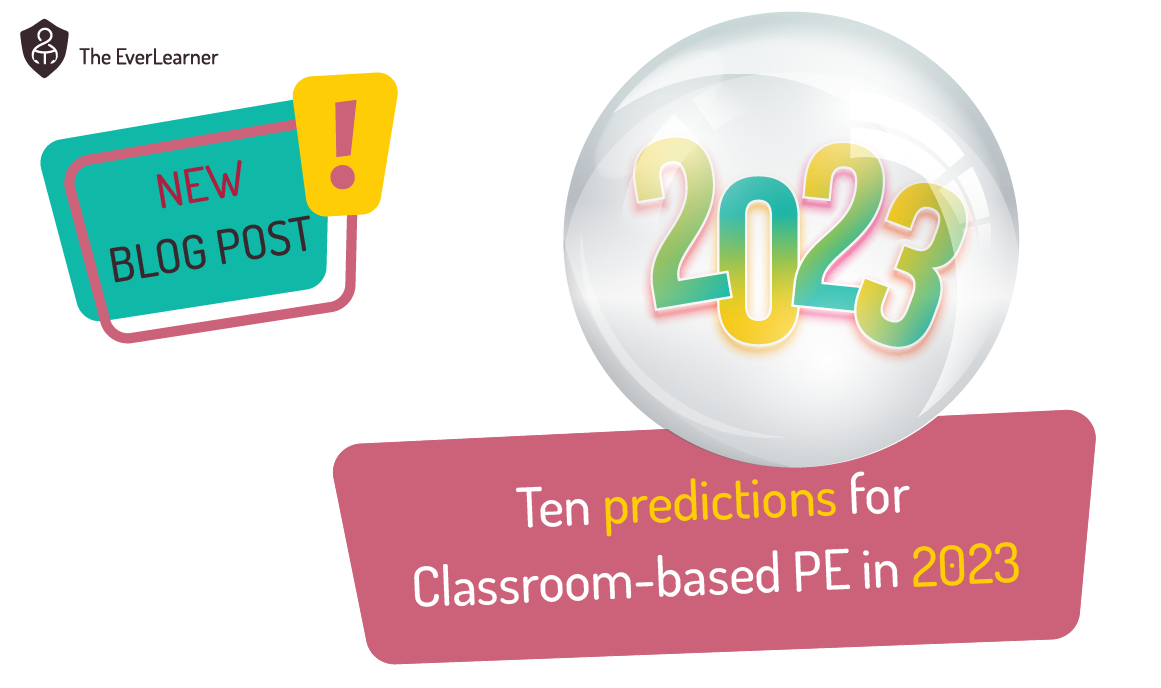Cramming Before a PE Exam - What Works and What Doesn't
We would all like to think that our students in GCSE, A-level, BTEC, OCR National and VCERT Sport and PE courses have no need to cram before exams but the reality is that thousands of students do exactly this. Therefore, I want to create some standards for what good cramming looks like in the days and hours prior to an exam. My background is in academic PE and science teaching so I will write with these areas in mind but I believe these principles are relevant universally. My readership on the blog tends to be teachers but I do hope that teachers will share this post with students as I am writing for them.
Let's start with the positive: what works
What works when cramming?
Idea 1: Prepare the AEI material.
In 2022, there is the unique situation where students will know what topic areas will be covered in high-tariff questions in the majority of their exams. This will inevitably lead to students prioritising this knowledge. When cramming, this seems sensible. But in order to cram effectively, students must know the exact requirements of each AEI section. Take a look at this example from Edexcel GCSE PE Paper 2:
 The section on commercialisation clearly states that students must be able to evaluate (advantages and disadvantages of commercialisation and media on sponsors, sport, players, and spectators), whereas the section on ethical and sociocultural tends to suggest that the questions will be descriptive or comparative. Students must acknowledge this and prepare their knowledge in this context. Anything short of this is highly inefficient cramming.
The section on commercialisation clearly states that students must be able to evaluate (advantages and disadvantages of commercialisation and media on sponsors, sport, players, and spectators), whereas the section on ethical and sociocultural tends to suggest that the questions will be descriptive or comparative. Students must acknowledge this and prepare their knowledge in this context. Anything short of this is highly inefficient cramming.
As an additional point, I want to stress that students will generally need support with this as schools, speaking very generally, tend to prepare students more for knowledge than for skills. I urge teachers, whether in the immediate or longer term, to switch the focus of their teaching more towards skill-based learning. If you would support with this, please get in touch with me.
For more information on AEIs, please read our blog posts for: AQA GCSE PE, OCR GCSE PE, Edexcel GCSE PE, AQA A-Level PE or OCR A-Level PE.
What works when cramming?
Idea 2: Know where your marks come from.
To cram effectively, students must spend the majority of their time on the most impacting aspects of their exam. There are two crucial components to this:
- What scale questions get asked?
- What are the common skills expected of students?
Take a look at this infographic for OCR A-level PE Paper 1:
Can there be any doubt that, if a student focuses their cramming time on four-mark questions and on ‘Explain’ questions, this will be highly impacting? This can be applied further with 20-mark practice questions and the ‘Evaluate’ skill.
Again, teachers will need to resource students with this insight. To help with this, my exam infographics for PE courses are available for free download via this blog post.
What works when cramming?
Idea 3: Engage with online revision shows.
There are lots of examples of these and thousands of students use them every year. There is a network of brilliant teachers offering their time, often for free, in the weeks leading up to exams. For my part, I am offering revision throughout May 2022 and will cover the entirety of the AEI material for students including the skills that are required for success. Find out more here: The EverLearner's Summer 2022 Revision Series
 The best revision shows include the following as a minimum and centres should be discouraged from paying for services that fall short of this:
The best revision shows include the following as a minimum and centres should be discouraged from paying for services that fall short of this:
- Teaching that covers the full extent of a potential mark scheme - please avoid sessions that “teach to the spec.” These will always fall short of the extent of a mark scheme.
- Teaching that is skill-based and honours the required skills in the specific exam.
- Teaching that includes exemplar exam answer demonstrations.
- Teaching that comes with high-quality notes where the student remains the agent of note-taking.
- Booklets of exam questions, mark schemes and model answers.
Speaking bluntly, there are numerous providers out there offering rebranded old rope for money and I urge PE teachers to identify this and to place their attention where quality lies.
What works when cramming?
Idea 4: Quiz, quiz, quiz!!
Drilling key subject vocabulary prior to an exam is very good practice. Whilst quizzing will never fulfil the full skill requirements of exam answers, quizzes will ensure that a student’s subject vocabulary is sharp. The image below shows options via the AQA GCSE PE 9-1 course on TheEverLearner.com where students can quickly and easily quiz on a broad range of relevant content.

Students can do this to any extent they wish and can quiz for hours and hours if they wish. I have included below the first ten questions I received when I hit “Entire chapter” and the quiz tested me on the skeleton, joints and muscles.
Notice the importance of language in this quiz. TheEverLearner.com drills this vocabulary and ensures that students can use it in context.
If you are not currently a subscriber to The EverLearner, be aware that we offer all departments a full-access 28-day free trial and this can be used in the month prior to exams.
Find out more here: The EverLearner's 28-day free trial
What works when cramming?
Idea 5: Work with mark schemes.
Mark schemes contain the most relevant exam language from past papers. The problem with this is that past-paper exam questions are definitely not going to feature on the pending exam. Therefore, teachers have a couple of options:
- Teachers can write brand-new questions and mark schemes.
- Teachers can use past-paper questions regardless of their limitations (not recommended).
- Teachers can provide students with ExamSimulator, which contains hundreds of mark schemes on questions that may very well be on this year’s papers.
Now, clearly, I am biased towards option 3 but I want to remind PE teachers that I built ExamSimulator, just as I built TheEverLearner.com for my own students because this was the gap in their experience. Here are some examples of what students could have access to:
And now the bad news… What doesn’t work?
All of the following should be avoided when cramming. Some of the activities can be valid when revising over an extended period but will not work in the last few days before exams.
- Reading through notes and trying to memorise them
- Trying to memorise knowledge organisers (I have a lot of issues with knowledge organisers and I will cover these in a future blog)
- Making flash cards (this is effective in an extended revision cycle)
- Making posters and placing them on walls
- Reading a textbook
- Listening to a podcast where a teacher reads out a script
- Engaging with non-specific subject content such as a generalised revision session for all exam boards
- Paying a tutor to visit you at home for an intensive course
Conclusion
Thank you, as always, for reading my writing. I really appreciate it. I wanted to write this post as I think it matters. I am aware that I am signposting my own work but, to be honest, it is for times like these that I created TheEverLearner.com and ExamSimulator. I made it because it works.
%20Text%20(Violet).png)













